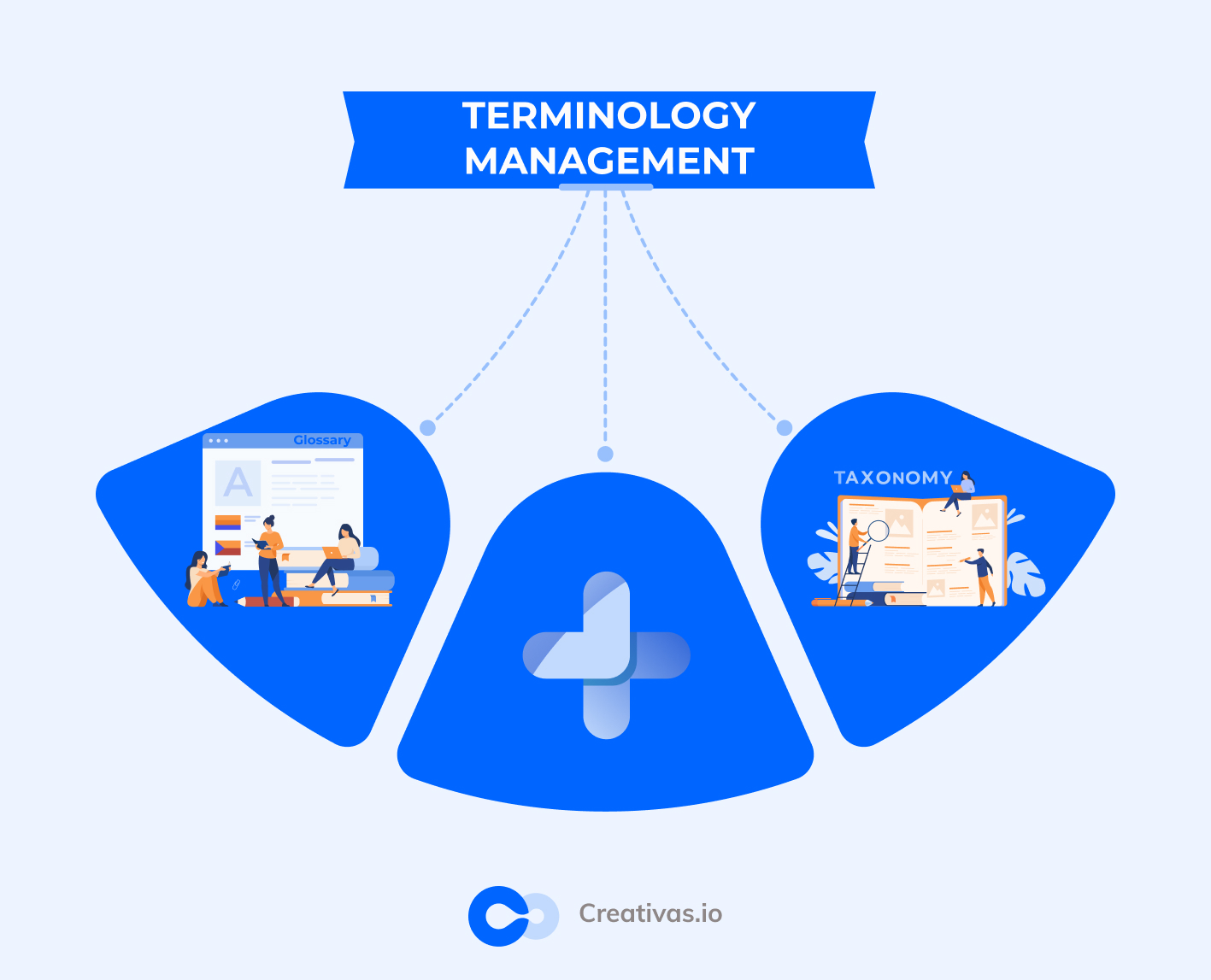
For better terminology management
Many companies nowadays are facing terminological problems due to a lack of awareness of terminology management system importance. The latter is a helpful way to boost companies’ work organization and communication. Also, it highlights the presence of teams within the company and makes the brand shine in the global market.
To better understand this system, Kremer, Kolbe, and Brenner, 2003 point out that “Terminology Management is the sum of organizational units, processes, and instruments that support the creation and management of terms and classifications in a specific subject area.” When this is achieved, consistent terminology will be implemented.
Terminology management is essential and should be used in all companies, not just the big ones. Felber & Budin,1989 point out that two very important tools for Terminology Management are document thesaurus (glossaries) and classification schemes (taxonomies).
Glossary:
If you’re a Confluence user, the first thing that comes to your mind when we say glossaries is Smart Terms for Confluence. As stated before in our blog “Make glossaries not war”, glossaries are important to every organization as they enhance internal and external communication within a team and between company stakeholders. Each department has its vocabulary and lexical field. It’s mandatory that every team gets accurate information and have a clear meaning for each term. As (Champe 1996) points out, “when people need to discuss the description of some word, it is very important that everyone understands the description in the same way.”
Smart Terms for Confluence AKA glossary saves you a lot of time and gives a better vision of the company terminology. It comes with several features that contribute to enriched terms’ definitions, related vocabulary (synonyms, acronyms, slang, idioms, and others), and globalized glossaries across spaces, and much more.
Taxonomy:
“A taxonomy is a classification schema to organize information in a hierarchical manner.” (Gaus & Leiner 2000, Bailey 1994). “Complexity reduction and navigation facilitation are the main reasons for using taxonomies.” (Logan 2001). In other words, taxonomies are used to organize the terms within the glossary to avoid any misleading search results.
Taxonomies not only improve the appearance of keywords but also improve search results because they allow you to categorize information properly. If taxonomy is not implemented, you can get the same term showing up repeatedly in several classifications. That, for example, leads to misconceptions. In Smart Terms for Confluence, you have the option labels that allow you to classify the term in which category you’d like so that it shows up only in it. By using Smart Terms, users have a common denominator for the meaning of the terms they are searching for, further improving search results. Another feature that’s related to taxonomy in Smart Courses is the alphabetical index. The first letter of the added term is automatically added to the index list, and all terms that start with the same letters are by default classified in that alphabetical index.
Implementation of both of them in Smart Terms for Confluence:
As previously mentioned, Smart Terms includes features for both creating a business glossary and having the taxonomy to categorize it for better search results. Kremer et al. “show that ideally both tools should be used together since they complement each other. One can imagine that a taxonomy would not work if there was no common understanding of included terms and dimensions and if they were interpreted differently, leading to ambiguous classifications.” By experience and research, glossaries and taxonomies work best if they are implemented together in the same place or tool. Many terminological deficits are solved if both instruments are there.

This approach was advised by researchers since the 19s as previously mentioned in several references, and this was put in this blog on purpose to highlight the fact that it’s not a matter of technology innovation or so. It’s more of a policy that was, still and will always be successful and beneficial for businesses in general.
For better terminology management, use Smart Courses for Confluence and navigate, search, and store easily and accurately through your glossary.
ConfluenceDefinitionsGlossaryHighlightTerminology management

